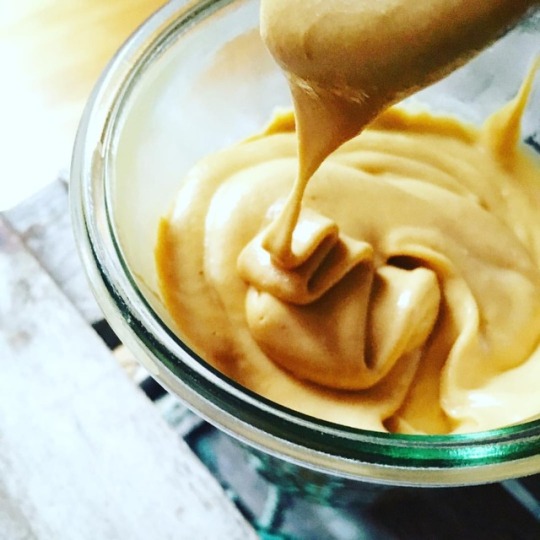Vegan Queso for Non-Vegan Friends
I had one of the worst meals of my life on a recent Tuesday. It started with the promise of dairy-free queso, which I acknowledge is already problematic as far as names go. But I have been testing out more vegan recipes lately for work, both for people who choose the arduous path of animal-free living as well the poor souls medically forced into avoidance. Anyway, thinking about the prospect of cheese-less lasagna gave me instant empathy.
In my search, I came across a vegan queso recipe that suggested eggplant as its base. It sounded reasonable enough, given the vegetable’s attendance in naturally plant-based dips like baba ghanoush. This “queso” was a particularly desirable kitchen experiment because it was also free of nuts, as so few dairy-free comfort food substitutes are. So I got to work.
As a result, I will now share some red flags for fellow eaters when it comes to vegan cookery. One should abort if a recipe calls for a suspicious amount of nutritional yeast—or cornstarch. Or if the writer mentions that a jettison of nuts was done intentionally to reduce calories. Or asserts that a husband or boyfriend or some otherwise gendered male example can vouch for its deliciousness, which is problematic for a whole host of reasons that I don’t have the time or patience to get into today.
In my case what resulted was a swamp-textured dip that tasted like a combination of rancid corn and homemade playdough, which I remember eating as a child in the eighties and would absolutely prefer should I ever have to make that choice. Even with the threat of E.coli.
Brett was kind and said the starchy swamp puree wasn’t that bad, which I suspect was mostly because when two people cook in a household, it can be a thrilling experience to be freed of the responsibly of putting dinner together after a long workday.
Plus we had tortilla chips.
The whole experience could have been enough to throw me off dairy-constrained recipes completely, except we had previously eaten a very good vegan queso that called for cashews and a shit ton of vegetable shortening, plus half of a russet potato. I am pretty sure the same people who may be evangelically opposed to shortening might feel similarly about potatoes, so this is a recipe for the rest of us.
I was all out of vegetable shortening and thus coconut oil was substituted as a source of saturated fat, which I suspect is probably important for structure. I assure the swap was not meant to be righteous. (As a general rule I would advise against self-righteousness when making queso.) It was what we had. I feel very strongly that coconut does not deserve the moral value it has been awarded on the internet.
The result was a gooey, stretchy sauce the color and texture of ballpark nacho dip. Its slightly smoky subtle heat has proven to be particularly excellent on split baked potatoes and with broccoli. Eaters can also be assured it makes no promises about your next trip to the cardiologist and this is what one should expect from queso—cheese or no cheese.
The whole experiment has only reinforced my theory that the best way to ensure a good-tasting substitute for a not-so-good-for-you food is to make it when health is not the point. This is not the time to employ slimy vegetables or fiber just for kicks. Nor is it the time to consider your gallbladder or your next cleanse. That would be a crime against cheese. I like to think anyone could agree with that. Even a vegan.
Vegan Queso
Adapted from J. Kenji López-Alt of Serious Eats
Ingredients:
- 5 tablespoons coconut oil or vegetable shortening
- 1 small onion, diced
- ½ jalapeño, seeded and diced
- 2 garlic cloves, thinly sliced
- ½ teaspoon cumin
- 1 teaspoon paprika
- ½ teaspoon garlic powder
- 2 tablespoons chopped chipotle with adobo sauce (the kind from a can)
- ½ medium russet potato (4 ounces), peeled and thinly sliced
- 1 cup unsalted cashews
- 1 cup water
- 1 tablespoon plus 1 teaspoon hot sauce (such as Frank’s RedHot)
- 2 teaspoons liquid from a can of pickled jalapeños
- Kosher salt (to taste)
Instructions:
In a medium saucepan, melt the coconut oil over medium heat. Add the onions, jalapeño, and sliced garlic and cook, stirring occasionally, until softened but not browned (less than 5 minutes).
Stir in the cumin, paprika, garlic powder, and chipotle and cook a minute or two until the mixture becomes fragrant.
Add the potato and cashews and cook, stirring occasionally, for 2 to 3 minutes. Add the water and bring to a boil then reduce the heat to a simmer, stirring occasionally. Cook until the potatoes are cooked through and completely tender (about 10 minutes).
Place the mixture in a blender and add the hot sauce, jalapeño liquid, and a generous pinch of salt. Start the blender on low speed and slowly increase to high speed. Blend until completely smooth (this will take a few minutes). During this time, you can add water a tablespoon at a time to thin to desired consistency. Season to taste with additional salt.
Makes about 2 cups
Notes:
- According to my kitchen scribble, I used about a teaspoon of salt. Be advised, you will likely need a few extra pinches when adjusting the seasoning at the end.
- It is recommended to use a high-powered blender, such as a Vitamix, and then press the mixture through a chinois, but I did not need to do this—it was completely smooth using just my Kitchen Aid blender.
- The sauce can be reheated on the stove top in a saucepan with a little water added.










